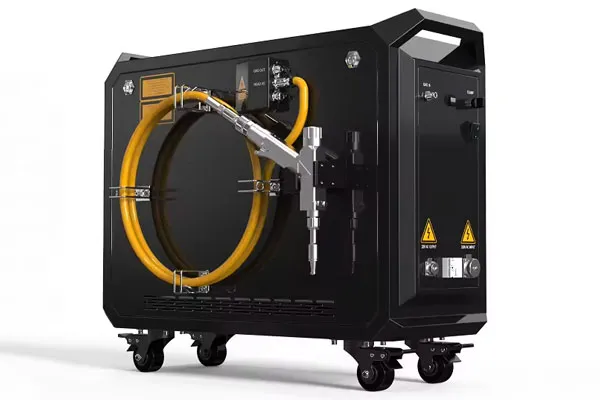Sponsor
How to Transfer Crypto to Hardware Wallet: A Complete Step-by-Step Guide
Managing digital assets safely is one of the top priorities for every investor in today’s fast-growing financial world. Among the many options available, a hardware wallet stands out as one of the most secure and reliable methods to store your holdings. If you are wondering how to transfer crypto to hardware wallet, this guide will walk you through every detail in a simple, beginner-friendly way.
What is a Hardware Wallet?
Before diving into the transfer process, it’s important to understand what a hardware wallet actually is.
A hardware wallet is a physical device designed to securely store your private keys offline. Unlike online wallets or mobile apps that stay connected to the internet, hardware wallets keep your data isolated, making them far less vulnerable to online threats.
Some of the most popular hardware wallets in the market include Ledger, Trezor, and SafePal. They come in USB-like devices and often feature a small screen and buttons for authentication.
Why Use a Hardware Wallet?
The key reason many investors choose hardware wallets is security. Here are the main advantages:
-
Offline storage: Keeps your private keys away from the internet.
-
Reduced risk of unauthorized access: Even if your computer or phone is compromised, your funds remain safe.
-
Long-term reliability: Hardware wallets are ideal for those planning to hold digital assets for months or years.
-
Multi-asset support: Many hardware wallets support a wide range of cryptocurrencies.
In short, transferring your funds to a hardware wallet ensures you stay in control.
Preparing to Transfer Crypto to Hardware Wallet
Before you begin, make sure the following steps are covered:
-
Purchase from an official source
Always buy your hardware wallet directly from the manufacturer or authorized resellers. Avoid second-hand devices. -
Set up the wallet
-
Connect it to your computer or mobile device.
-
Install the official wallet software (e.g., Ledger Live for Ledger, Trezor Suite for Trezor).
-
Create a new wallet and write down your recovery seed phrase on paper. Never store it digitally.
-
-
Install the required apps
Many hardware wallets require you to install specific apps depending on which digital asset you want to store. -
Verify your address
Once your wallet is set up, you’ll be able to generate a receiving address for the chosen asset.
Step-by-Step Guide: How to Transfer Crypto to Hardware Wallet
Here’s the simple breakdown:
Step 1: Connect and Unlock Your Hardware Wallet
-
Plug in your hardware wallet using the provided cable.
-
Enter your PIN code to unlock it.
Step 2: Open the Wallet Software
-
Launch the official companion app (Ledger Live, Trezor Suite, etc.) on your computer or mobile.
-
Navigate to the section for the digital asset you want to transfer.
Step 3: Generate a Receiving Address
-
Click on Receive inside the wallet app.
-
Your hardware wallet will display a unique address.
-
Confirm the address shown on the device screen to ensure it matches what’s on your computer.
Step 4: Log In to Your Exchange or Current Wallet
-
Access the account where your funds are currently stored.
-
Navigate to the Send or Withdraw option.
Step 5: Enter the Receiving Address
-
Copy the address generated by your hardware wallet.
-
Paste it into the withdrawal section of your current wallet or exchange.
-
Double-check the address carefully to avoid mistakes.
Step 6: Choose the Amount and Confirm
-
Enter the amount you want to transfer.
-
Review transaction details, including network fees.
-
Confirm and complete the transfer.
Step 7: Verify on Hardware Wallet
-
After the transfer is complete, check the transaction status in your hardware wallet software.
-
Depending on network congestion, transfers may take a few minutes to confirm.
Best Practices for Secure Transfers
While the process is simple, here are some essential tips to follow when transferring crypto to hardware wallets:
-
Always double-check the receiving address
A small mistake can lead to permanent loss of funds. Use the hardware wallet’s screen to verify. -
Avoid copying addresses from unknown sources
Only use the official wallet software to generate addresses. -
Enable two-factor authentication (2FA)
If you’re withdrawing from an exchange, make sure your account is secured with 2FA. -
Test with a small amount first
For your first transfer, send a small amount to ensure everything works properly. -
Keep your recovery phrase safe
Store it offline in multiple secure locations. This is your ultimate backup. -
Stay updated
Regularly update your wallet software and firmware to benefit from the latest security improvements.
Common Mistakes to Avoid
Even experienced investors sometimes make errors when transferring funds. Here are the most common ones:
-
Sending to the wrong network
For example, sending tokens meant for Ethereum to a Bitcoin address. Always check compatibility. -
Not checking fees
Some networks have higher transaction costs. Make sure you’re aware of them before transferring. -
Buying hardware wallets from unverified sellers
This can lead to compromised devices. -
Losing the recovery seed phrase
Without it, you cannot restore your funds if the device is lost or damaged.
Advantages of Keeping Crypto in a Hardware Wallet
Once your funds are transferred, you’ll notice the peace of mind that comes with offline storage. Key benefits include:
-
Full ownership: You hold the private keys, not a third-party service.
-
Offline protection: Even if your computer is infected, your funds remain secure.
-
Portability: Hardware wallets are small and easy to carry.
-
Future readiness: They often support upcoming assets through software updates.
Hardware Wallet vs. Software Wallet: Which Is Better?
To better understand why hardware wallets are recommended, here’s a quick comparison:
| Feature | Hardware Wallet | Software Wallet |
|---|---|---|
| Security Level | Very High | Moderate |
| Internet Connection | Offline | Online |
| Convenience | Medium | High |
| Cost | Paid device | Often free |
| Suitable For | Long-term holding | Everyday use |
Both have their own purpose, but for long-term safety, hardware wallets are unbeatable.
Final Thoughts
Learning how to transfer crypto to hardware wallet is a must for anyone serious about protecting their digital assets. The process may seem technical at first, but once you go through it step by step, it becomes second nature.
A hardware wallet gives you full control, maximum security, and peace of mind. Whether you’re holding a small amount or building a long-term portfolio, taking the time to transfer your assets properly is one of the smartest moves you can make.
Important Links
How Do Memecoins Gain Value Without Real-World Use
Should Beginners Invest in Memecoins or Bitcoin First
How do I avoid scams when investing in memecoins
How Does Blockchain Technology Support Cryptocurrency
How to Keep Cryptocurrency Safe from Hackers





